Animation: The Reel Deal
This week, we find out how science can help you get from script to screen in animated movies, from the physics of balancing a giraffe on a tightrope to the researcher putting voice actors in a brain scanner. Plus, news of why we're more prone to viral infections when we're jet-lagged, how a common technique to prevent premature birth could actually cause it and did campfires kill the Neanderthals?
In this episode

00:55 - Body clock impacts infection rates
Body clock impacts infection rates
with Dr Akhilesh Reddy, University of Cambridge
Many people complain that going on holiday causes them to catch a cold, and now we may know why! The reason, scientists at Cambridge University are suggesting, could be down to the jet lag! They've found that disruption to your body clock makes infecting viruses grow up to ten times more efficiently in your cells. Akhilesh Reddy spoke to Chris Smith about their discovery...
Akh - Well we kind of figured that viruses are unusual in terms of microorganisms that infect the body because they actually need our cells in order to replicate. And, therefore, because every single cell in the body has this biological, or circadian 24 hour clock within it, we thought that there might be a particular time of the day when all of the things that the virus required would be increased, and at other times when they would be decreased. So, if the virus comes along at one time of day it could capitalise on the cell that is making all the stuff that it wants and another time of day it wouldn't be able to replicate as well because all of the stuff that it needs isn't there simply.
Chris - Because the role of that clock is, basically, to prepare or optimise the metabolic activity in your cells to meet the demands of the day ahead. So that the cells are turning on their energy supply in the morning when you need to get up and face the challenges of the day, and they're turning down the thermostat at night when you need to go to sleep because you don't want to have the coal-fired power station running away at a furious pace when you don't need that energy?
Akh - Absolutely. It's a mechanism to essentially ensure your cells run efficiently so you're not wasting energy when you don't require it to be used.
Chris - But, obviously, if the cells are not very active they're not as good a home for a virus as when they're running full pelt. Is that the case then when you put viruses into cells do you see that's what's happening?
Ak - Exactly. That's exactly what we saw in cells and in live animals as well. And this was done in mouse models but also in free cells which are very similar between mouse and human.
Chris - Do cells in a dish have a clock?
Ak - Yes, exactly, yes. Cells in a dish have a clock and we can synchronise those clocks by doing various things in the lab. And what we did was to synchronise these cells, or infect mice at different time of day and have a look at how quickly that virus then spreads over a few days. And we found that if you infect in the morning, then you're much more likely to see a higher rate of infection than if you didn't do it before dusk.
Chris - This is mouse morning because mice are nocturnal aren't they? So they're actually going to bed when we're getting up so for them it's nighttime but it's really morning, if you see what I mean.
Akh - Yes, exactly. But the complicated thing in terms of how you look at clocks is that actually, the genes that go up and down in us and mice are, actually, identical in terms of their structure and also, the phasing is the same, so we interpret those clock/gene signals in the opposite way. So we live in the daytime, they live at nighttime. And in the brain in fact, bizarrely, the genes are going up and down exactly the same in both species, but the way that's interpreted by the body is actually opposite. So we don't exactly know what happens in humans.
Chris - So we have this body clock - it's a genetic clock where you've got a gene that ticks on and it turns on another gene, which turns on another gene, and that feeds back and turns of the first gene, and this ticks round - it takes about 24 hours. It changes the activity of cells as it does so. Now I started this interview by saying that this does help us to explain the holiday lurgy syndrome when you catch stuff when you go away. Now a part of that must be when you're sitting on an aircraft for hours doesn't help but, if you get jet lagged, that is going to screw around with your body clock so that, presumably, will make your cells more susceptible to growing viruses more?
Akh - Absolutely, yes. So we did an experiment where we messed up the clock using a genetic trick, and we looked at both cells and animals, and when we infected them they were something like three or four times more affected by the virus than the normal cells, essentially. So that's very similar to what happens in people who have jet lag or people who fly across the world, as you say.
Chris - Does this mean we could use this therapeutically if we understand the importance of the body clock to a range of diseases including virus infections? Could this change the way in which we treat these diseases?
Akh - We believe so. So when we did this experiment we used two different types of viruses, so the clock seems to be important for both of these viruses that replicate by completely different means. So the idea is that instead of having an antiviral that will actively boost your natural immune system at one time of day or another, instead of having one for each individual virus, you might just be able to boost your own immunity to multiple different viruses if you could switch that on or off, and that's exactly what we're trying to target at the moment.

05:39 - Surgical stitch can affect babies
Surgical stitch can affect babies
with Dr Phillip Bennett, Imperial College London
 Every year around two million pregnant women worldwide undergo a simple procedure known as cervical cerclage - putting a stitch in the cervix, or neck of the womb, which helps to prevent premature birth or miscarriage. While it's broadly very safe and helps to save babies' lives, Phillip Bennett and his team at Imperial College London have identified an important issue with the type of thread used for this important bit of medical sewing. Kat Arney went to see him...
Every year around two million pregnant women worldwide undergo a simple procedure known as cervical cerclage - putting a stitch in the cervix, or neck of the womb, which helps to prevent premature birth or miscarriage. While it's broadly very safe and helps to save babies' lives, Phillip Bennett and his team at Imperial College London have identified an important issue with the type of thread used for this important bit of medical sewing. Kat Arney went to see him...
Phillip - About 80% of doctors in the United Kingdom use a braided tape-like stitch material. It's flat, it's quite fat, it looks a little bit like a shoelace, and that is thought to be good because it's strong, it's easy to tie knots in and it's not likely to damage the cervix.
About 20% of doctors use a nylon thread which looks more like a fishing line, if you like, and there have been concerns that that nylon thread is not so easy to tie and also that it might potentially damage the neck of the womb.
We have a particular interest in the role that the bacteria in the vagina play in pre-term birth. And, some time ago, we asked the question - does a cervical stitch change the bacteria that are in the vagina?
Kat - So what are the different risks of these two different sorts of procedures for making these changes in the bacteria?
Phillip - So, what we found is that first of all, all of the women in whom we put a cervical stitch already started with slightly abnormal bacteria in their vagina, which points towards the idea that one of the risk factors for delivery early is having abnormal bacteria.
What we found then is that in the women who had the tape-like -the braided tape-like - stitch, the healthy bacteria tended to die off and they tended to be replaced with more harmful, more pathogenic bacteria. And that was associated with increased inflammation in the vagina and cervix, and with evidence on ultrasound that the cervix was beginning to ripen and soften. Whereas the people whose cervical stitch was performed using the nylon stitch, we found no changes at all. It had no effect on the bacteria, it didn't cause inflammation, and it had no effect on the structure of the cervix.
Kat - How did you find this out? How many women did you look at?
Phillip - So, in that part of the study, we just looked at 25 women who'd had the stick with the braided stitch and 25 women who'd had the stitch with the nylon stitch, and then we looked in the laboratory at what happened to the bacteria and to markers of inflammation. But what we then did was we went back to look historically at our hospital data. When we looked back at nearly 700 patients across five university hospitals in London, Birmingham and Cambridge, we found that those women who had had the nylon stitch had a lower risk of preterm birth, and a lower risk of their baby dying in-uterus than with women whose stitch had been performed using the braided material.
Kat - Presumably this procedure is carried out in many countries around the world - how would that scale up?
Phillip - We estimate that are about 2 million cervical cerclage operations performed annually throughout the world. So we think that if everybody in the world changed from the tape to the nylon, then this would save 170,000 babies per year from dying, and it would prevent 170,000 pre-term births.
Kat - In terms of the absolute risk, obviously some women might be very concerned - can we put this in perspective?
Phillip - Well, the great majority of cervical cerclage operations, over many decades, have been performed using the tape stitch and it's clear that, in the right patients, putting a cervical stitch in is definitely beneficial. So what we've effectively shown here is an operation, which was a safe operation, which improves outcome, can be made even safer if we choose the right suture material.
It's also important to bear in mind that the data we have at the moment is retrospective - it's from looking back at case series. And we really need to get the result of a prospective study in which the only differences between the two groups of patients are the type of stitch material that we're using; and that trial is currently being conducted by the University of Birmingham.
So what I would say is, if anybody is about to have a cervical cerclage procedure, please talk to your doctor and I would encourage you to take part in that study. For people who are not in the study, I think that we could say, at the present time, it's probably better that the nylon stitch be used rather than the tape stitch.
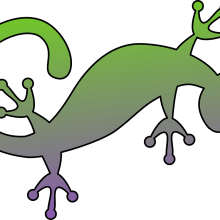
11:00 - Fish out of water: fins to feet
Fish out of water: fins to feet
with Professor Jennifer Clack, University of Cambridge
Graihagh Jackson has been exploring how, over 350 millions years ago, our ancestors first evolved to walk on land...
Graihagh - Once upon a time, there was an era known as Romer's gap. It spanned 25 million years and, much to paleontologists' dismay, it's a complete fossil blackout. Nobody has been able to find any and it's a bit of blow because what happened in that period is pretty important when it comes to understanding how we evolved to live on land.
Before Romer's gap there were only fish, and afterwards, we have an abundance of animals walking around with limbs and fingers - what scientists call tetrapods.
So how did this happen? How did our ancestors get from sea to soil? It's all a bit of a mystery but, a little over 25 years ago, Professor Jenny Clack found something in the basement of Cambridge University's Sedgwick Museum that changed everything...
Jenny - Well, at the beginning of my career, I had the opportunity to examine material in the Sedgwick Museum and, low and behold, it turns out that a student had picked up some tetrapod fossils.
Graihagh - It was called Acanthostega...
Jenny - If you count up the number of features, it's about two thirds of a tetrapod and one third of a fish.
Graihagh - And that's not all...
Jenny - He wasn't particularly interested in them so we put them back in the drawer. And I found out about this and went to have a look, and what the student had found was what would appear to be been a quarry full of these things.
One of the very first things we found out about it was, as we prepared the best specimen we had, was that actually it had eight fingers.
Graihagh - Eight fingers! That's a lot of fingers.
Jenny - Yes. And so that profoundly changed about how we thought about the origin of tetrapod limbs, and uses, and how they developed.
Graihagh - On previous fossils, they'd only found five finger and toes, and scientist thought this mean that fish had slowly come onto land, lumbered around, and then developed limbs so they could eventually walk. But eight fingers, along with some other evidence, suggested otherwise...
Jenny - We thought that digits arose for use in water and that walking on land came later. And having digits in the water gives you a certain amount of advantages for crawling through reed beds and that kind of thing.
Graihagh - A lot was happening during this time. Not only was there a mass extinction, but also climate changed dramatically and gave rise to swampy conditions with lots of vegetation, which meant fish needed digits rather than fins to push these leaves aside and swim on through. It was quite a revolutionary theory and so naturally I wanted to see the evidence in the flesh, or you might say - bone...
Jenny - I'll need to some help with this.
Graihagh - Yes.
Jenny - There should be a wedge...
Graihagh - A door wedge?
Jenny - I hesitate to say this but this is the animal we call Boris.
Graihagh - Why do you call it Boris?
Jenny - I don't know but it got that name soon after we collected it. The overall proportions look a little bit like a small crocodile or a small alligator.
Anyway, this is the forearm, this is the humerus (the upper arm bone), the radius and ulna (the lower arm bones), and here is the hand. Now my colleague was preparing it bit by bit - he found a finger, and then he found another one, and another one, and another one, and so on so that, in the end, he'd got eight.
Graihagh - I imagine him just sort of slowly moving away bits of rock and thinking - ah, one, two, three, four, five - ah, there's five fingers, there you go, I'm done.
Jenny - He nearly did exactly that. But there was a bit more matrix to remove so he thought we might as well make it a proper job and take the rest of the matrix and, of course, he found the other three.
Graihagh - I mean thank goodness he did because, I mean, removing rock is painstaking work, isn't it?
Jenny - Yes it is, yes.
Graihagh - It's 25 years since you published that paper, so what have you been doing in between?
Jenny - About 10 year ago my colleague, Tim Smithson, who's in the next door office, decided that what he wanted to do was to explore to see whether he could find anything from Romer's gap and, after many years, he actually found them.
Graihagh - So does that mean Romer's gap is a fallacy - Romer's gap doesn't exist anymore?
Jenny - That's correct! Because subsequently, over the past four years, we've found a whole lot more. Not only tetrapods, but the fossil record of other vertebrates as well: Lungfishes in particular, and chondrichthyans (shark-like animals), and we've increased the number of known species from one in the case of the Lungfish to seven, and from two in the case of the chondrichthyans to ten new species. One of the things we haven't found in the Devonian so far is small animals. And that's one of the things we're finding most of in Romer's gap - lots of small animals. It's partly preservation, but it's also because we think that some aspects of becoming terrestrial required these animals to become smaller so that they could walk about more easily.
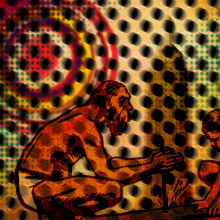
17:16 - Did smoking kill the Neanderthals?
Did smoking kill the Neanderthals?
with Gary Perdew, Penn State University
Smoke inhalation would have been a serious threat for early man, due to campfires. But it appears that modern humans have evolved a reduced sensitivity to the chemicals in smoke so that it doesn't trigger so much inflammatory damage to our airways. Looking at the equivalent genes in Neanderthals shows they didn't have this protective change, which is perhaps contributed to their demise, as Chris Smith heard from from Penn State University researcher Gary Perdew...
Gary - We work on receptors called the aryl hydrocarbon receptor or AH receptor that sensors external chemicals in the environment. So, if you're exposed to smoke from a diesel bus or from a fire, there's many chemical constituents in that smoke that will actually bind and activate this receptor. And the overall idea is that once this receptor is activated it increases the expression of enzymes that will metabolise and help your body get rid of those chemicals.
Chris - Right, so we're endowed with a system for detecting 'nasties' in the environment and dealing with them but, obviously, we didn't evolve in the context of buses spewing out diesel fumes and that kind of thing so why would we have this naturally?
Gary - Probably the most obvious response to that would be this concept that plants have a lot of different chemicals that they express in order to keep animals from eating them. So this system would have evolved, probably, to largely deal with our dietary exposures.
Chris - What's the relevance then to combustion?
Gary - Out in the wild you wouldn't be exposed to smoke constituents except for if you started to utilise fire and you stay in close proximity to that fire on a day in, day out basis. Then that would become an issue.
Chris - And what influence might that have had on us genetically then?
Gary - So then, the idea would be that if this receptor was hyper-activated by that exposure, that could lead to toxicity. It's good to have response to low levels of dietary chemicals so you can get rid of those and deal with them. But if, all of a sudden, you're exposed to high levels of these compounds in smoke you're going to breath them in your lungs and it's going to cause lung toxicity.
Chris - It sounds a bit paradoxical then. You detoxify the smoke but, in the process, you do damage! Why would that happen?
Gary - The kinds of chemical reaction that this enzyme catalyses leads to intermediates that are reactive but our body has a way to deal with them effectively at low levels. So it's not a problem except for when you produce them at too high a rate.
Chris - Oh, so if we're exposed to a lot of smoke then this is overloading the system and, therefore, potentially doing harm and your argument would be have we, therefore, evolved to become less susceptible or less sensitive to these sorts of chemicals compared with other animals because of our use of fire?
Gary - Yes, exactly.
Chris - Right, so if I look at our human ancestors we know that there was Homo erectus that was around a million years ago or so until more recently. It then splits of and you get anatomically modern humans (us), and you also get Neanderthals coming off. So if one compares Neanderthals with anatomically modern humans (us), do both Neanderthals and us have this smoke handling capacity?
Gary - It turns out that the neanderthal sequence for this receptor, they would metabolise these compounds more rapidly than humans.
Chris - How do you know that?
Gary - There are three Neanderthal genomic sequences; the entire genome of the Neanderthals was sequenced. So once we could get the full DNA sequence for this gene we were able to synthesise it artificially - there's a company that will do this for you now - and so we have the full length sequence for the neanderthal receptor and the human receptor that we can now compare experimentally.
The way we do this is we'll introduce these DNA sequences into a cell line that doesn't express the AH receptor and then these cells will express it. We can expose them to increasing amounts of polycyclic aromatic hydrocarbons and look at the ability of each receptor to increase the level of these metabolising enzymes.
Chris - Wow! So you're effectively re-creating a fossil gene (a Neanderthal gene) in the modern context and seeing how it changes the behaviour of cells in the presence of these chemicals?
Gary - Yes.
Chris - And you're saying the Neanderthal equivalent responds very differently than the modern human equivalent?
Gary - Yes. The Neanderthal has 150- to as much as 5,000-fold difference in its ability to increase expression of these enzymes.
Chris - Now one obvious thing about Neanderthals is that they are no longer with us. Would you contend, then, that one factor that might contribute to their disappearance is that they didn't evolve to handle smoke as well as we did and they were possibly being killed off by their own camp fires?
Gary - Yes, that would increase their susceptibility to diseases and infections because of lung toxicity, or even in the gastrointestinal tract. They were eating charcoal broiled food, which I'm sure they weren't the greatest cooks and probably were a bit blackened at times...
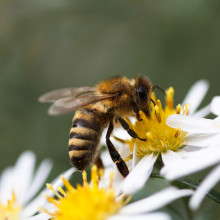
23:01 - Pesticides reducing wild bee numbers
Pesticides reducing wild bee numbers
with Ben Woodcock, Centre for Ecology and Hydrology
There are concerns that the use of neonicotinoids pesticides, - the most commonly 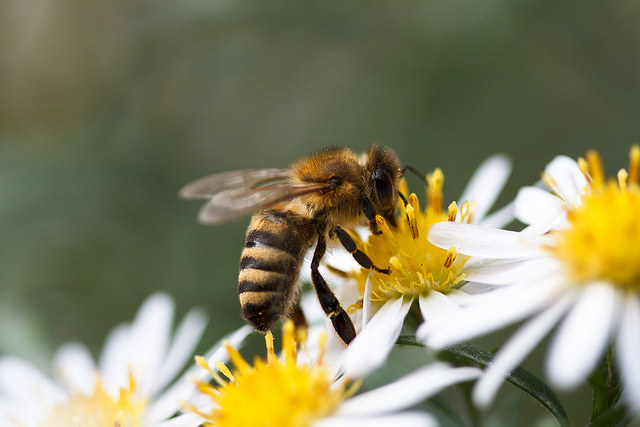 used form of pesticides - on flowers like oilseed rape, are causing declines in these pollinators. In an enormous citizen science project, scientists from Oxfordshire have been able to track several species from the time from when these pesticides were first introduced. Lucka Bibic spoke with Dr Ben Woodcock about their findings...
used form of pesticides - on flowers like oilseed rape, are causing declines in these pollinators. In an enormous citizen science project, scientists from Oxfordshire have been able to track several species from the time from when these pesticides were first introduced. Lucka Bibic spoke with Dr Ben Woodcock about their findings...
Ben - What we've done is we've built on a number of previous studies that have been looking at the potential impact of neonicotinoids on bees. Now a lot of these previous studies have focused on a very small number of bee species; these are bee species that you can actually breed, so that's honey bees, the buff tailed bumblebee, and red mason bee. What we've been able to do is use citizen science data, collected by the bees, wasps and ants recording society, over a really long period of time (that's 18 years), and that stretches the time before when neonicotinoids were not used to the time when neonicotinoids were used on the major mass flowering crop in the UK, oilseed rape.
Lucka - What were the findings of your long term study then?
Ben - What we find is that for those types of bees that specifically feed on oilseed rape, those that are likely to be exposed to this pesticide, they're three times more likely to undergo declines in their distributions than species that don't. And, overall, we find that there's a 10% decline in the distributions of these species and, for some species, this can be as high as 30%.
We've also been able to do that at a really large spatial scale, so we've done that at the whole of England and we're looking at individual 1 kilometre grid scales and we look around at 4,000 of those in England. And we've also been able to extend beyond previous studies into looking at many, many species.
In the UK, there's about 250 species of wild bee and what we've been able to do is look at population changes, or changes in distributions of these species, for 62 of these. Now many of the remaining species are just simply too rare to do an analysis on. And what this whole approach has allowed us to do is relate these changes in populations, or the distributions, over time and see how we get a response to oilseed rape as it's treated with neonicotinoids.
Lucka - OK. And how many people or farmers are using this type of pesticide?
Ben - So at the end of our study it was about 85% of fields were treated with neonicotinoids. They're a crucial pesticide and I think it's really important to remember here that the production of many crops is dependent on the use of pesticides. And even if we were in a situation to ban neonicotinoids, alternatives would have to be used. You can't grow, for example, oilseed rape organically in the UK - that's not viable.
So it is quite a complex situation. Farmers are dependent on these pesticides and if we want to keep growing food, which is obviously the case, then we need to come up with management solutions that are compatible both with native wildlife and also with the needs of farmers.
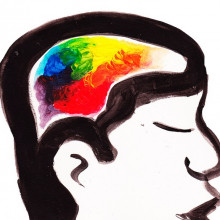
27:02 - Where do new ideas come from?
Where do new ideas come from?
with Dr Anna Abraham, Leeds Beckett University
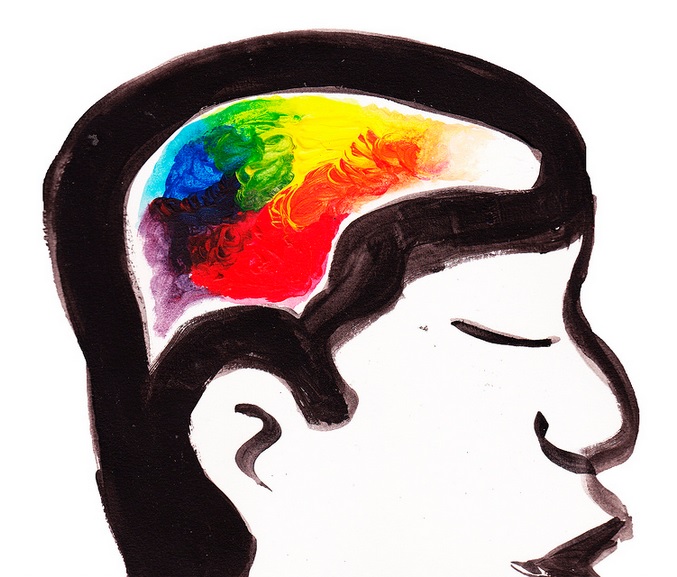 When making a movie; before the script, before the storyboard, before the very first meeting - a film needs to come from an idea. So where and why does inspiration hit, and what's going on in the brain? Dr Anna Abraham is a neuropsychologist from the Leeds Beckett University, and she explained the inner workings of inspiration to Georgia Mills...
When making a movie; before the script, before the storyboard, before the very first meeting - a film needs to come from an idea. So where and why does inspiration hit, and what's going on in the brain? Dr Anna Abraham is a neuropsychologist from the Leeds Beckett University, and she explained the inner workings of inspiration to Georgia Mills...
Anna - The first idea is to try and understand what was going on in the brain was to look at single regions to try and see whether one part of the brain (the right brain) was more creative than the left brain and so on.
Georgia - I remember seeing online like - are you right brained or are you left brained (one's maths, one's creativity) - is it as simple as that?
Anna - It's not, unfortunately for us, because it makes things more complicated. For a long time it was thought to be true and it's not completely illogical why they assumed that. Its because most of the tasks they were comparing it to were sort of logical tasks so it's "how do you tie your shoelace" or something like that. And if you compare something like a logical task to a creative task, then the right brain would be more involved because the right brain is a more spontaneous, generative. But, in the meantime, we know that both modes of operation are equally important. It's important to have this spontaneous generative aspect in order to generate many ideas but it's as important to have a controlled, reflective mode as well in order to pick the best ideas. To truly pick the most original idea to be as creative as you can.
Georgia - So different regions are sort of better at doing different things but all the regions need to kind of talk to each other and work together to get this whole creative process going?
Anna - Exactly - it seems to be the case and in most other non-creative aspects of thinking you would need only one or the other network of brain regions. But in terms of creative thinking, you actually need this very sort of dynamic interplay between quite different networks of brain regions that are either being very spontaneous or very deliberate and it needs to be working in unison together.
Georgia - OK. And in terms of when someone comes up with the new idea - where is that coming from and how is the brain sort of generating this new, never-before-seen thing?
Anna - Our ideas come from our own minds. Our minds are very powerful things though, and we're not really quite sure exactly how ideas come about but we're getting closer to these answers. We take in a lot of information everyday through our senses, consciously, unconsciously. A lot more goes in than we are even aware of.
But then the true magic begins after that because all of this information, once it's stored, is weakly or strongly associated with every other piece of information in the brain and, when we're trying to generate new ideas, it's all about how these different pieces of information can be combined in novel ways. And some of us are better at getting at these original, novel combinations than others.
Georgia - I see. So it doesn't come from nothing, you're just taking different parts of your experiences and combining them in new ways?
Anna - That's exactly it. So you take in a lot of information from different sources. So let's say I go to the bakery in the morning and I pick up my croissant and later on I see a child drawing on a pavement, and at night I might have a dream that the child was drawing a croissant. I didn't actually see the child do that, but in my dreaming mind, all of these things that were not previously connected in my real experience, are being combined in my mind. It's almost like the puzzle pieces can be taken, although you acquire them in certain separate boxes, once it's in there you can just combine the puzzle pieces in any way possible. The limitations are only kind of in your own mind.
Georgia - I see. So creativity is basically just stealing with style, isn't it?
Anna - Absolutely, yes.
Georgia - And a lot of people say oh, I'm not very creative, I can't do that. Are some people just not creative and are there ways you can get better at it?
Anna - A lot of people feel that they are not creative and that's because they have certain notions about what it means to be creative. So they only see people who practise the visual arts or music and so on as being creative. In truth, we're being creative in every sphere of our lives all the time: when we speak, when we're cooking in the kitchen, and when we think about new ways to solve problems, and we're a very, very creative species. Some of us are easily more creative than other people but it doesn't mean that in any way we are set in our talents, whether it's an Olympic sport, or whether it's trying to improve your memory, creativity is the same thing. You can improve with practise, and you can improve it in very, very deliberate ways...
31:46 - Animation through the ages
Animation through the ages
with Sean Cubitt, Goldsmiths, University of London
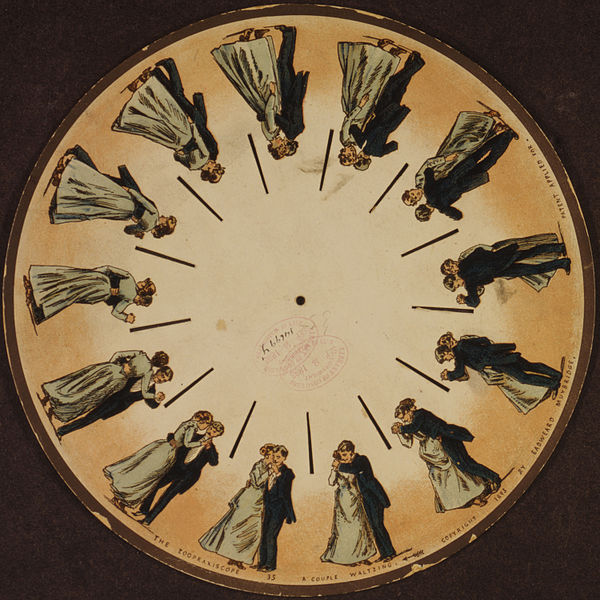 Animations have arguably changed more in over the years than any other kind of film genre, and they are closely linked to the technology of the time. Sean Cubitt is from Goldsmiths, University of London where he researches the history of visual technologies, and he took Chris Smith through a short history of animation...
Animations have arguably changed more in over the years than any other kind of film genre, and they are closely linked to the technology of the time. Sean Cubitt is from Goldsmiths, University of London where he researches the history of visual technologies, and he took Chris Smith through a short history of animation...
Sean - I would say it's pretty much the oldest art form there is. If you think of casting shadows on the wall of the cave by firelight or being taken through the caves and looking at the paintings by the light of a flickering torch; you're talking about an animation of hands and of drawings.
Chris - So we think that's probably the origins of people getting to grips with the art form of moving imagery that's not real pictures and from there it's evolved since?
Sean - Absolutely! It begins, I think, in the very ancient past, it grows through almost universal fascination with puppets, and then it begins to turn into optical toys, first at the time of the Jesuits in the Baroque, especially in their interactions with Japanese and Chinese culture. And then with the invention of lots, and lots of toys of phenakistoscopes and thaumatropes all through the 19th century.
Chris - What are they?
Sean - These are often physical objects which rotate inside either using prisms or slats there's a way of making fixed images appear to move.
Chris - Oh, this is the idea where you had that big drum with the slits cut in it, and it looks like the horse is jumping over the fence because you get a series of snapshots of a picture and it makes it look like it's moving?
Sean - Exactly! That's exactly it and it helps feed into the birth of cinema. Although the first cinema animations were actually recordings of music hall artists who did lightning sketches. But very quickly they started to realise the same principle of stop motion in cinema, whether it was with line drawings or with objects such as a box of matches in a famous example from 1903. That you could make the appearance of life which is, of course, the principle of the anima, of the soul coming into objects and bringing life.
Chris - When did the cartoon, or the animation as I would probably recognise it as such in a cinema - when did that actually come in?
Sean - The first really recognisable ones are around 1903/1904, especially with a French artist called Emile Cohl. But by 1914, all the basic technologies were put in place for what became the major animation industries like Disney's and Warner Bro's. cartoons.
Chris - What sorts of things in 1903 were people going to the cinema to see of these animations - was it sort of Tom and Jerry-esque or was it something a bit more serious and sombre?
Sean - The one I just mentioned - the fabulous matches which come to life and make a little dance, or if you think of - perhaps some of your audience will have seen some of Méliès' films where Méliès animates his own body and arts of the scenery by using stop motion techniques, and that sort of a little bit later in 1906. But the big breakthroughs in line drawing animation really happened around 1914. Disney isn't quite in the forefront; he was a struggling late arrival into the business. But they had established the fundamentals that would then guide the cinema industry right the way through to the 1970s and all of its animation.
Chris - Now I grew up on a diet of Bugs Bunny, and Tom and Jerry, and that kind of thing. They were made the old fashioned way, I presume - people were literally sitting there drawing every single one of those frames by hand?
Sean - Absolutely!
Chris - How long did they take?
Sean. So an average seven minute animation would take anything between three to six or seven months, they became highly industrialised and highly organised. Your top artists would only do the key frames (the most important beginning and end of an action), and then you would have cheaper artists filling in the motion gaps in between; others to do colours; others to do lines, etc.
Chris - What about the music that went with them because there was a whole industry around making it sound good as well, wasn't there?
Sean - There was: Silly Symphonies, Merry Melodies - the music was fantastic but even more so was the sound effects which, by the time of say Snow White in 1937/38, were extraordinarily advanced and involved the most incredible, manic creativity in the sound studios.
Chris - I'm just seeing in my mind - and you can hear the sound if I just describe the scene of the person who goes over the cliff edge, and there's nothing underneath them, and their legs kind of grab at thin air and the go - ' duddle uddle uddle uddle' - for a while before they go 'petewe' downwards. Anyway, that's another story. What about the transition into digital animation though - what actually has that done to the industry?
Sean - It's given us a whole range of new toys. Perhaps the biggest thing is that all cinema animation is based on stop motion but digital animation is based on creating genuinely three-dimensional objects in the computer which can move continuously. So, although we record them onto scanned screens, which then introduce a stop motion effect like any kind of cinema reproduction or any television reproduction, nonetheless the object themselves are continuously moving in real time. This has been insanely useful for two great things: one is you can navigate anywhere within the imagined world, and the other is that you can do this in real time nowadays which, of course, is the fundamental basis of the computer games industry which is, perhaps, the biggest consumer of animation nowadays.
Chris - Well, the consumer games industry actually turns over more than Hollywood, doesn't it? I mean it's a hugely, highly grossing industry. Just to finish - where's this going next, what do you see in the future for animations?
Sean - The first thing to note is that there's animation everywhere, from radar screens to seismographs. Scientists themselves are using animation as they have been, as major pioneers, right back to the Voyager II flyby videos from 1973. I think we're going to see a great deal more of motion capture...
Chris - This is where you film somebody and then superimpose what they did onto an inanimate creation?
Sean - Exactly, yes - like Gollum for example. We're going to get more augmented reality like Pokemon Go, but what I'm really looking forward to is really real, three-dimensional objects that wander around in the world. Robots are the future of animation.
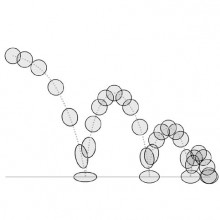
39:07 - Hippos on tightropes: perfecting physics
Hippos on tightropes: perfecting physics
with Prof Alejandro Garcia, San Jose State University
 Film animators need to be very well versed in, not only art, but physics. This is because our brains are very sensitive to the way in which the world around us should work. So if there's something slightly wrong with the way an object falls, or some water moves, it can trigger a mental reality check and break the spell of the movie for the viewer. Georgia Mills caught up with physicist Alejandro Garcia from the San Jose State University who has been a consultant for DreamWorks, and is a strong believer that fictional films need to obey the laws of physics...
Film animators need to be very well versed in, not only art, but physics. This is because our brains are very sensitive to the way in which the world around us should work. So if there's something slightly wrong with the way an object falls, or some water moves, it can trigger a mental reality check and break the spell of the movie for the viewer. Georgia Mills caught up with physicist Alejandro Garcia from the San Jose State University who has been a consultant for DreamWorks, and is a strong believer that fictional films need to obey the laws of physics...
Alejandro - In creating a film the director has to think about what kind of world is being presented and how things are in that world. And usually the audience will have more connection with a world that feels real, that is believable, and having believable physics goes a long way towards creating a believable world that can serve for the suspension of disbelief for the audience to actually be engaged.
Georgia - So how would you go about creating the sort of realistic rules of physics?
Alejandro - Well animators - they start out by studying basic motion and recreating basic motions and they realise that, in some cases, in films the rules of physics will be broken. But, for the most part they want to follow the laws of physics and for effects animation like fire and smoke, they want to have those look believable as well.
Georgia - Is it just a case of looking at this in the real world and copying it, or do you have like equations to make the perfect fire?
Alejandro - Oh, there's definitely equations. And I should mention that all the studios have scientists that design computer simulations (fluids), and usually these are folks who were classically trained with PhDs in physics or mechanical engineering, and so forth and their simulations are similar to what is done in regular physics research.
Georgia - So it really is a case of scientists at the drawing board, I guess?
Alejandro - Yes. Now there is one major difference in that the scientists that work in a studio, they have to be able to have a simulation which is what they call 'art directable.' For example, they might do a simulation of smoke and show it to the director and the director will say "well, I like that but I need the smoke to move this way and I also need the smoke to look friendlier - the smoke is looking too angry." Seriously, this is exactly the kind of feedback they get and so they have to go and adapt their simulation to fit with the vision the director has for the story at that point.
Georgia - ; I suppose, in a similar vein, you mentioned getting the physics right but a lot of animations have quite zany, whacky things going on, which completely defy the laws of things like gravity. How do you go about that?
Alejandro - Often the laws of physics are broken as a way of relieving tension because that removes often the danger that's possibly in a scene, whereas scenes that are more dramatic tend to have more realistic physics. So adjusting the accuracy of the physics can be used as a plot device in a film.
Georgia - So could you perhaps give me an example of a film you've worked on and how you (sort of) worked on this process?
Alejandro - Yes, so this was Madagascar III. In the film there's a lot of circus acts so I worked with the animators in terms of doing trapeze work, tightrope. You know, if you have a hippopotamus and a giraffe on a tightrope, how do you make them move so that it actually looks believable when they're trying to maintain their balance?
Georgia - I love that - you've got to make a giraffe and a hippo on a tightrope seem believable?
Alejandro - Exactly, exactly! And I think we were very successful in that.
Georgia - In terms of Madagascar III - that's an example of a film, I guess, that was built up from the ground up. But then there's these films that animation is layered on to real life like using things like motion capture - how does this differ from the processes you mentioned?
Alejandro - Motion capture is usually for films which are live action and they are trying to take a character that is mostly human but is modified...
Georgia - ; Like Gollum, for example?
Alejandro - Like Gollum, exactly - he's the classic example. So the limitation of motion capture is that you are always going to have a character which is moving like a human. You can take that performance and the animators can manipulate it, but you basically start from that, a human performance. And one example is when you have a very large character, like in Jack the Giantslayer. So the giants were all done with motion capture but there was a minimal manipulation of the timing of them. When you see them, sometimes they don't feel giant because they're moving exactly like a regular size human. One thing which helps in that regard is actually slowing down the timing - that was used in the most recent Captain America civil war, where one of the characters is very large at one point in the movie. And they did motion capture for him but then they slowed the time down, I think by a factor of three, which then makes the character feel gigantic.
Georgia - And just finally - obviously crafting a story in a film is a very difficult thing. But just in terms of getting the physics right - what is the single hardest thing someone can ask you to do?
Alejandro - The one thing which animators worry about all the time is getting a sense of weight for characters. This is an enormous challenge because every point in the motion you have to determine what kind of forces are acting, and also what kind of reaction occurs when that character is interacting with another character. So the biggest challenges is multiple characters interacting with each other, or with elements in the environment.
Georgia - So an animated battle scene, for example - that would be a bit of a nightmare?
Alejandro - Exactly! That's probably one of the most challenging sort of shots to do.
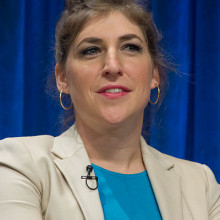
45:51 - Voice acting: art or science?
Voice acting: art or science?
with Dr Mayim Bialik, Actor, The Big Bang Theory
 Most animations don't just rely on their images, - they are often brought to life by the actors who lend their voices to the characters. One of them is neuroscientist Dr Mayim Bialik, who did voice overs for cartoons like Johnny Bravo. She is also well known for playing Amy Farah Fowler in the television series The Big Bang Theory. Lucka Bibic spoke to her about her voice acting career...
Most animations don't just rely on their images, - they are often brought to life by the actors who lend their voices to the characters. One of them is neuroscientist Dr Mayim Bialik, who did voice overs for cartoons like Johnny Bravo. She is also well known for playing Amy Farah Fowler in the television series The Big Bang Theory. Lucka Bibic spoke to her about her voice acting career...
Mayim - I did a lot more voice over work when I was younger - I actually used to play a boy's voice a lot, even though I may not sound like a boy right now. When I was younger I was definitely able to sound more a young boy, a ten or eleven year old boy's voice. That was definitely something I was matched for. And when I would play girls, I would often be cast to play a bully because I have kind of rough voice; I have a scratchy voice and I would often do New York accents. My parents are New Yorkers so that accent comes very easily to me and that's kind of a funny character to have a kid's villain who's got a heavy New York accent; it's kind of funny.
Lucka - And do you think your body movement while you're doing voice overs can help you with the voice that you want to achieve?
Mayim - Absolutely! You know it depends on what the character is doing but a lot of times I do kind of get physical when I'm doing voice over work. And you can absolutely tell when you're listening to a voice over if someone has movement where appropriate. Even though you can't see a smile, for example, your voice definitely sounds different when you're smiling while saying something than when you're not!
Lucka - How is it possible for you to mimic different voices?
Mayim - I'm not a perfect mimic; there's definitely kind of an innate ability that some people have. The actor on the big Bank Theory, Simon Helberg who plays Wolowitz; he has a remarkable ability to do identical mimicry of people's voices; he does an amazing Nicolas Cage impression and it literally sounds like that person. So I don't have that kind of talent like Simon does, for example, but for people who can do that there's definitely some magic to it.
Lucka - As a neuroscientist, do you also think that the voice-overing is more science or an art?
Mayim - Well I think that everything is science so even art is science to me.
Lucka - Awesome - I'm the same.
Mayim - You know I think when you see people who are really, really talented. You know voice over actors who can do a lot of different kinds of voices, there's something in that person's brain that is so special, and for people who do mimicry really well and can imitate someone else's voice, you really get a feeling for that. That there's something in that person's brain that is much different than any other actor trying to do it. So, I guess, it's a healthy amount of both.
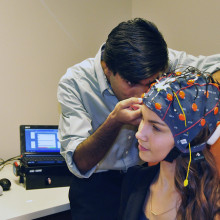
48:40 - The neuroscience of a good impression
The neuroscience of a good impression
with Prof Sophie Scott, UCL
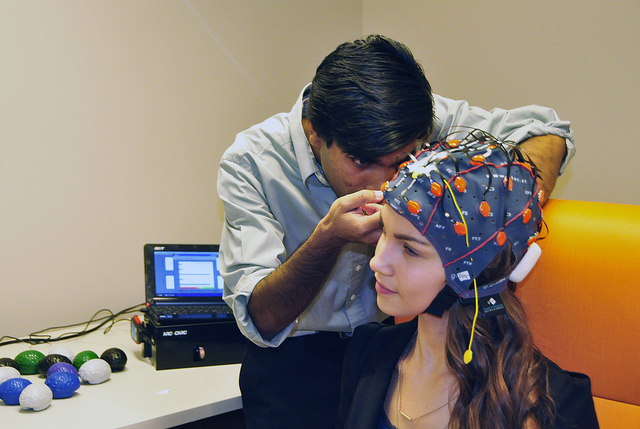 What's the difference between a good and great vocal impressionist? Sophie Scott from University College London, is well on her way to finding out, after putting amateurs and professionals in her brain scanner, as she explained to Chris Smith.
What's the difference between a good and great vocal impressionist? Sophie Scott from University College London, is well on her way to finding out, after putting amateurs and professionals in her brain scanner, as she explained to Chris Smith.
Sophie - I wanted to know what they we doing so I have done a handful of individual cases of people who are voice artists to try and get to grips with what's happening when they change their voice.
Chris - Because, of course, we have circuits in our brains that know the words we want to say; we have other circuits in our brains that control what the muscles of our faces do and our diaphragm and vocal cords do, but that's to make your own voice. So put me in the shoes of someone trying to change their voice. How do they do that?
Sophie - Two different things seem to happen. So if you take people who are not professionals, so me just trying to impersonate my mum, for example, what you see, and we've actually done this as a proper study, is that you can actually see in their brains they're actually thinking about the sounds of that voice and they're trying to get there. They're using like an auditory target to try and change their voice.
One of the things that is interesting about voice artists is they don't seem to do that. A couple of people I've looked at when they are changing their voice, what they do is they drive visual and sensory motor parts of the brain. So they seem to be thinking about what people people look like and how they move in order to change their voice and that's something you don't see in non-professionals. It seems to be a completely different approach to what somebody should sound like.
Chris - Well have does it change then when someone goes professional and becomes Rory Bremner who can do anybody, as far as I can tell - what does he do differently?
Sophie - Well do you know what, hopefully, one day when I've got more than a handful of people through the scanner, I'll be able to give you a better answer, but one of the things does seem to be a completely different approach to the voice. So, people who are non-professionals they're thinking about sound, the professionals seem to be approaching the voice almost like a whole body phenomenon; they're thinking about everything that somebody does; they'll talk about what people eyebrows are doing and how their hands are moving; things that do not affect what you sound like directly. The other thing that, anecdotally, I have noticed in the voice artists I've worked with, the impressionists I've worked with, is that very frequently intensely musical. So, perhaps, they are simply approaching the voice as a musician might; their instrument rather than somebody thinking about speech and what speech should sound like. And I think that is what everybody else is doing.
Chris - Now when you say the real pros, they adopt the other mannerisms of a person they're seeking to imitate. Do you get an affect then where your eyes read onto your brain what you want to see and, therefore, you create the sounds in your head because you see them behaving like that so you almost hear the real person, and so you're fooled into thinking they sound more like the person than they really do?
Sophie - Well you definitely see that. If you look there's lots of YouTube videos of people doing amazing impression and very often they really help that by having labels that appear, so that's slightly guiding us. But I think it's even more basic because I've noticed people do that even if they're doing a radio recording. So they're doing something for which they will be recognised only by their voice but they're still moving their body differently; they're moving their face differently to get to that impression. So I think it is just a basically different way of approaching altogether how you sound.
Chris - And thinking about the neuroscience and the anatomical nuts and bolts of how we do this. How does your voice actually work and enable you to produce all this different range of sounds and try to sound like somebody else?
Sophie - Well, we don't often think about it this way but, actually, the voice is an unbelievably complex musical instrument and it's operating unlike pretty much anything else you can find in nature with the exception of some song birds.
So we've got the larynx, which is your voice box, and that's where you're making a sound so if you put your finger on your throat and go 'uhh,' you can feel the vibration and that's the source of most of our speech and sort of uses of our voice. And then you shape that with your articulators, which are your lips, your tongue, your soft palate at the back of your throat, and your jaw. And it's as if you're playing a musical instrument where you're continuously changing your timbre by how how you're moving the articulators. That's the sort of template for how we talk.
But then within that it's still unbelievably flexible so you can do all sorts of thing with your larynx; you can vary the pitch of your voice; you can vary how you vibrate your vocal folds, so I'm talking talking right now with what's called model voice, but I can talk with a breathier voice, which isn't actually entirely coming from the larynx...
Chris - Like the woman off Masterchef?
Sophie - Yes. Or I can speak with a croakier voice that's really valenced. Some people really, really hate it and actually, in the UK, it's rather a posh way of speaking; lots and lots of posh people have got a very croaky voices. So that's kind of coming from changes right down in your larynx and then you've got all these different things that are happening up in the articulators. My old boss in Cambridge had an extremely nasal voice and he's just using his soft palate differently. I have another colleague who has a different tension in her jaw when she's talking and that's all little ticks and stuff that going in there that's kind of cueing you into who it is that you're talking to.

Can I unlearn something?
To get to the bottom of it, Claire Armstrong spoke to Cambridge University neuroscientist, Laura Ford...
Laura - So to start to answer this question it's important to think about what learning is at the neuronal level. We have two nerve cells that are talking to each other really; there's a message that's sent from one cell and it's received to the other neuron and this is a reinforced connection because we use it very often, and we're learning, and recalling information.
So what we need to do is try and encourage that neuron to talk to another neuron, and that's the process of unlearning.
Claire - So by changing which neurons talk to one another it is possible to unlearn something?
Laura - Absolutely! It is essential that we are able to unlearn things. If we think of an example; we have a baby crying and we want to comfort that baby in the middle of the night to allow them to go back to sleep. And so the baby will learn, it will associate that when it cries then it will have a cuddle so, for the sake of our sanity, we want the child to unlearn this behaviour. So we'll undertake a process which is called extinction, which is this idea of just slowly creeping away and letting your child know that you're there but allowing them to learn how to self-sooth.
Claire - So what exactly is going on in a baby's brain when this is happening?
Laura - Neurons - they form network, they talk to each other. The more they talk to each other, the better friends they become. Put it this way - it almost becomes a hardwired in the system when we learn something and this happens very heavily throughout the process when we're growing up and we're learning and acquiring new information, and incorporating it in our networks. But we can, with a lot of encouragement, persuade that neuron to talk to a different neuron and make friends with them instead, and this is a process of unlearning. And the way that you're doing that is it's a lot more effortful in the first instance but then that itself can also become habitual.
So it's just this idea of asking your networks to be recruited in a different way and neurons to speak to a different one than they might be used to. And that may be harder than acquiring information just when you're learning off pat, but it certainly can be done and, in some cases, it is essential!
Claire - Thanks Laura - I'll bear that in mind next time I notice a bad habit! I guess this means there's hope that one day I can shake them off. Next time on question of the week we'll be squeezing out the answer to this question.
Kevin - Why does line-drying make clothes rough?










Comments
Add a comment